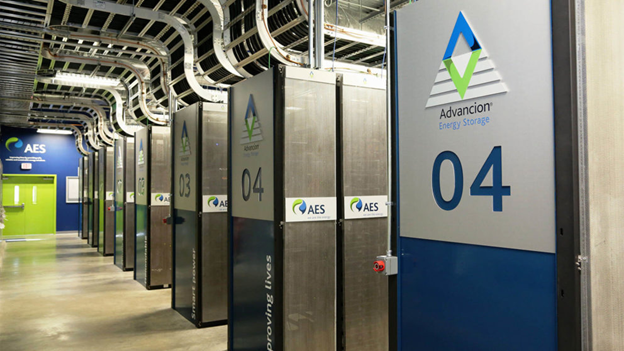 In 2017, the Maryland General Assembly enacted HB 773, calling for the Maryland Department of Natural Resources (DNR) Power Plant Research Program (PPRP) to conduct a study of regulatory reforms and market incentives that may be necessary or beneficial to increase the use of energy storage in the state. The
In 2017, the Maryland General Assembly enacted HB 773, calling for the Maryland Department of Natural Resources (DNR) Power Plant Research Program (PPRP) to conduct a study of regulatory reforms and market incentives that may be necessary or beneficial to increase the use of energy storage in the state. The  Energy Storage in Maryland report (The report was updated on 1/22/2019 to reflect the changes in this
Energy Storage in Maryland report (The report was updated on 1/22/2019 to reflect the changes in this  Errata Sheet.) reviews the range of storage technologies available today, their diverse applications, the status of storage in Maryland, the barriers that discourage more widespread use of storage in the state, and several approaches to promoting storage used by other states. (Because most state-led efforts to increase storage development are quite recent, little is known about their long-term impacts.) The report then discusses steps Maryland could take to increase the use of storage. Many steps involve the Maryland Public Service Commission updating rate designs and regulations that pre-date the rise of storage and currently may inhibit utilities, third-party project developers, and customers from deploying storage systems or utilizing them fully. The Commission could also take a more active role in overseeing distribution system planning, which may promote the use of storage as a grid asset and foster the growth of distributed resources, including storage. In addition, the General Assembly could use targets and incentives in an effort to attract commercial activity, accelerate real-world learning from storage deployments, help push storage further down the cost curve, and compensate storage owners for a portion of the benefits that might otherwise flow to the system as a whole.
Errata Sheet.) reviews the range of storage technologies available today, their diverse applications, the status of storage in Maryland, the barriers that discourage more widespread use of storage in the state, and several approaches to promoting storage used by other states. (Because most state-led efforts to increase storage development are quite recent, little is known about their long-term impacts.) The report then discusses steps Maryland could take to increase the use of storage. Many steps involve the Maryland Public Service Commission updating rate designs and regulations that pre-date the rise of storage and currently may inhibit utilities, third-party project developers, and customers from deploying storage systems or utilizing them fully. The Commission could also take a more active role in overseeing distribution system planning, which may promote the use of storage as a grid asset and foster the growth of distributed resources, including storage. In addition, the General Assembly could use targets and incentives in an effort to attract commercial activity, accelerate real-world learning from storage deployments, help push storage further down the cost curve, and compensate storage owners for a portion of the benefits that might otherwise flow to the system as a whole.
Due to various constraints, including time and funding, this report lays out potential actions for the state without making value claims regarding which options would be appropriate to pursue. PPRP encountered diverse views on many of these options. Regarding targets and incentives, it is critically important to note that the degree of system benefits (or public benefits) available from storage depends on a host of factors, including timing; prior investments (in storage and other electric power infrastructure); market prices for energy, capacity, and ancillary services; and the composition of the industry in the state (which affects the value of resiliency). These factors dictate that before any major program or major program elements are settled upon, a cost-benefit analysis should be conducted, just as a cost-benefit analysis is presently employed for EmPOWER Maryland programs.
Picture: Fluence’s 10-MW Warrior Run Energy Storage System
Source: Sandia National Laboratories & Strategen Consulting, LLC, “Warrior Run 10 MW Advancion Energy Storage – AES,” accessed December 7, 2017.